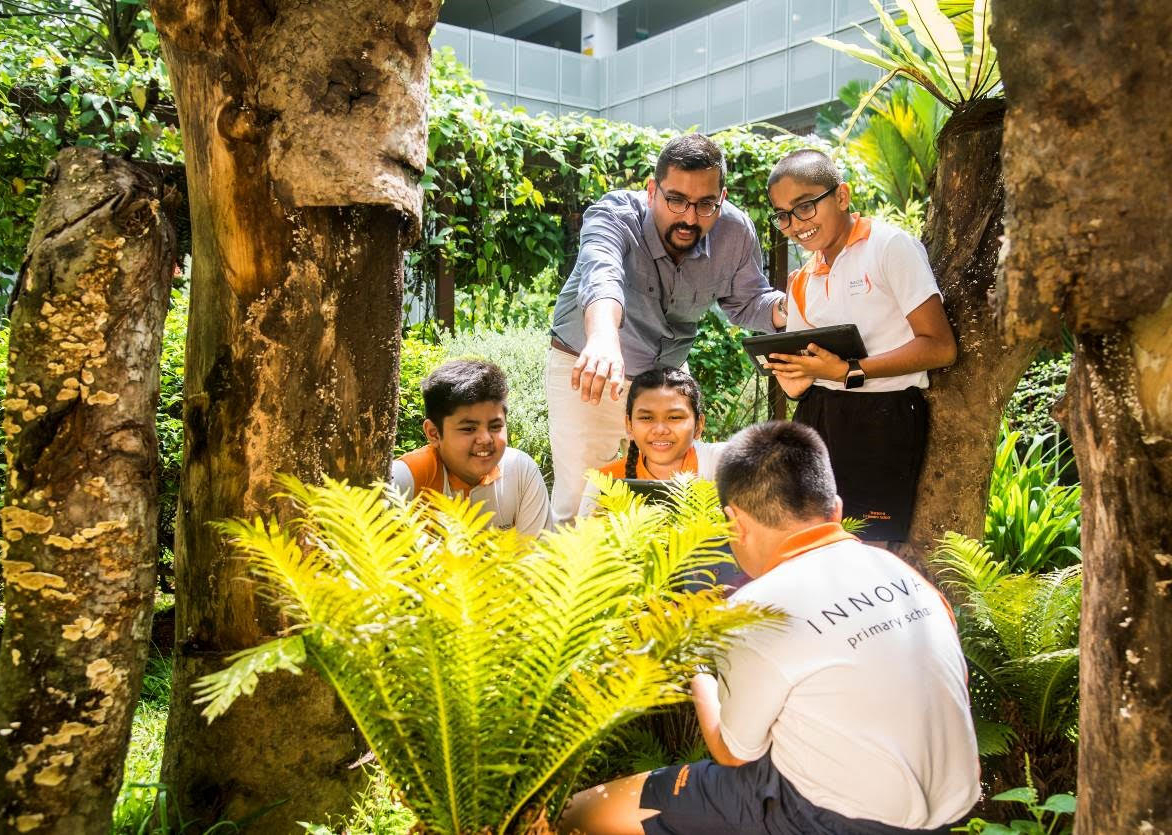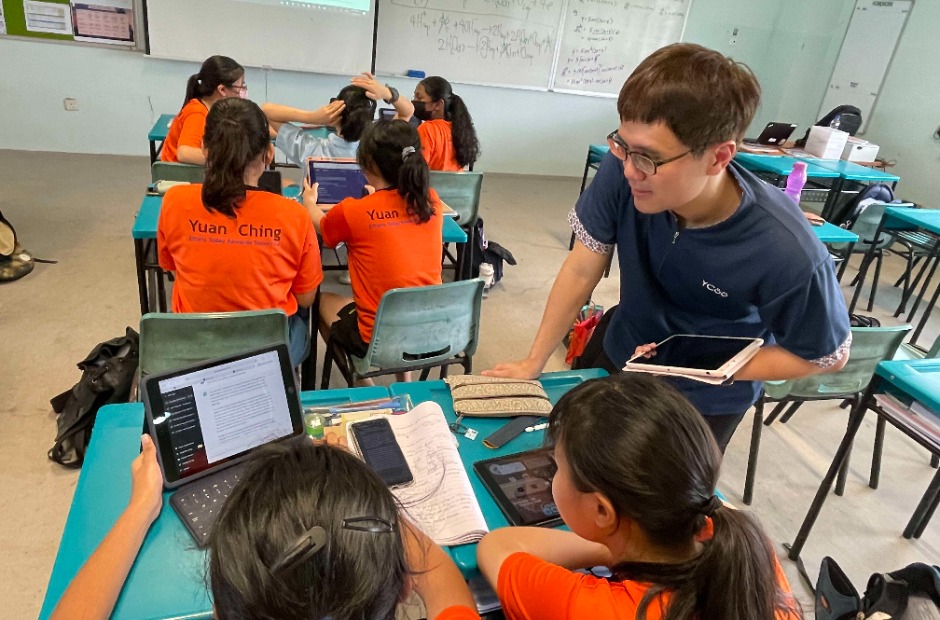Mr Mohamed Azhar Bin Mohamed Noor, Innova Primary School, President’s Award for Teachers 2019 Recipient
Adaptation — the process by which animals evolve in particular ways in response to the environment — is an important scientific concept. But how do you teach this concept to a class of primary school students? Mohamed Azhar Bin Mohamed Noor decided to send his students on a Pokémon hunt.
“I could have dished out a textbook example of eagles having sharp beaks that allow them to rip out the flesh of their prey,” says Azhar, who is Head of Department (Science) at Innova Primary School. But would the children remember or connect with that?
Instead, he got his class to draw Pokémon characters with different characteristics. He then hid the drawings around the school and challenged the students to find them.
To win, however, his students had to not only find the characters, they had to identify the character’s important feature and function. They would point out to Azhar, for instance, that a particular creature is able to move easily in water, thanks to its streamlined body.
Activities like that help children learn better, says Azhar. “Children may not remember the text or the things you say. But they can always remember the activities and how you made them feel. Those things will stick with the children.”
Science through stories
The activities that Azhar plans are inspired by everyday life. Chinese drama serials, for example, inspired him to teach basic Science concepts through storytelling.
When Azhar was a student, he would come home from school and the only thing on TV would be the Channel 8 drama serials. He realised that because it was a story made up of connected episodes, it hooked the viewer and made them want to continue watching.
“So, I thought, if concepts are taught like television episodes, connected by a story, children would not want to miss a lesson.”
He came up with the story of a boy who is lost at sea and separated from his parents. The boy wakes up and finds himself alone on an island.
Over the course of a year, the boy goes through different adventures in his quest to leave the island. And through these adventures, which Azhar scripted, the children are introduced to the topics in the Primary 3 syllabus such as living and non-living things, how to classify plants and animals, and bacteria and fungi.
As part of the experience, students also explore the school in search for the different plants and animals mentioned in the story.
Hands-on learning
Another experience that he designed for his students was inspired by the idea of a ‘sail car’ that he saw while on a course in New Zealand. The sail car was a big box with a sail and wheels, large enough for an adult to sit in it and steer. Azhar adapted the idea to teach his students about wind as a renewable source of energy. His version was folded papers on wheels powered by students blowing at it.
This idea grew into an inter-school competition, where a total of 25 students from five schools got to race their ‘sail cars’ along the length of a badminton court.
Not every lesson requires leaving the classroom though. To bring home the idea how water goes from a solid to a liquid and then to a gaseous state, Azhar devised a game using hand movements that represented freezing, melting, evaporation and condensation. The students then call out the process demonstrated by Azhar through his hand gestures.
This game became so popular that other teachers approached Azhar to find out more, and students were spotted doing the movements as they answered questions during a class test.
Azhar believes that experiential learning is very powerful. This is something he draws from his own childhood. As a young boy, he would invariably take his toys apart to see how they worked.
This mechanical inclination was perhaps something he got from his father, who worked as a technician at the Public Utilities Board. Azhar’s father had little formal education, and had learnt to use machinery purely through hands-on learning.
Science meets Art
Azhar was all prepared to become a mechanical engineer until he did a stint as a relief teacher in a primary school before starting his undergraduate degree at the National University of Singapore.
This sparked a love of teaching and he enrolled at the National Institute of Education to prepare to become a teacher after he completed his engineering degree.
His subject proficiency in Art and his aesthetic skills have come in handy at Innova Primary School. When he first joined the school, he roped in his NIE lecturer and some of her students to paint murals on the walls outside the Science labs, showing animals that live in mangroves. These murals continue to be used today – students go to the walls to look for the animals in the story of the boy lost on the island.
A sense of identity
As the Head of Department, Azhar’s philosophy in developing teachers under his charge is to nurture a sense of identity as ‘Science teachers’.
“When you have this sense of identity, when you are proud of being a Science teacher, you will want to do more. Work becomes play. It becomes a passion.”
He encourages other teachers to share their opinions freely as he believes that sharing “accelerates the learning process for everybody, and the people who benefit are our students”. He propounds the same message as the team leader for the learning community, which comprises Science Heads of Department from other schools.
“We are all craftsmen,” says Azhar. “We can only learn from each other on how to get better.
“You begin as an apprentice. When you get better tools, acquire better techniques, you become an accomplished craftsman. Then you have this obligation to share it with others so that this craft passes on.”
Teaching is not just any ordinary craft though, adds Azhar. “It is the most wonderful craft you can ever be involved in, because you are trying to shape and inspire young minds.”






